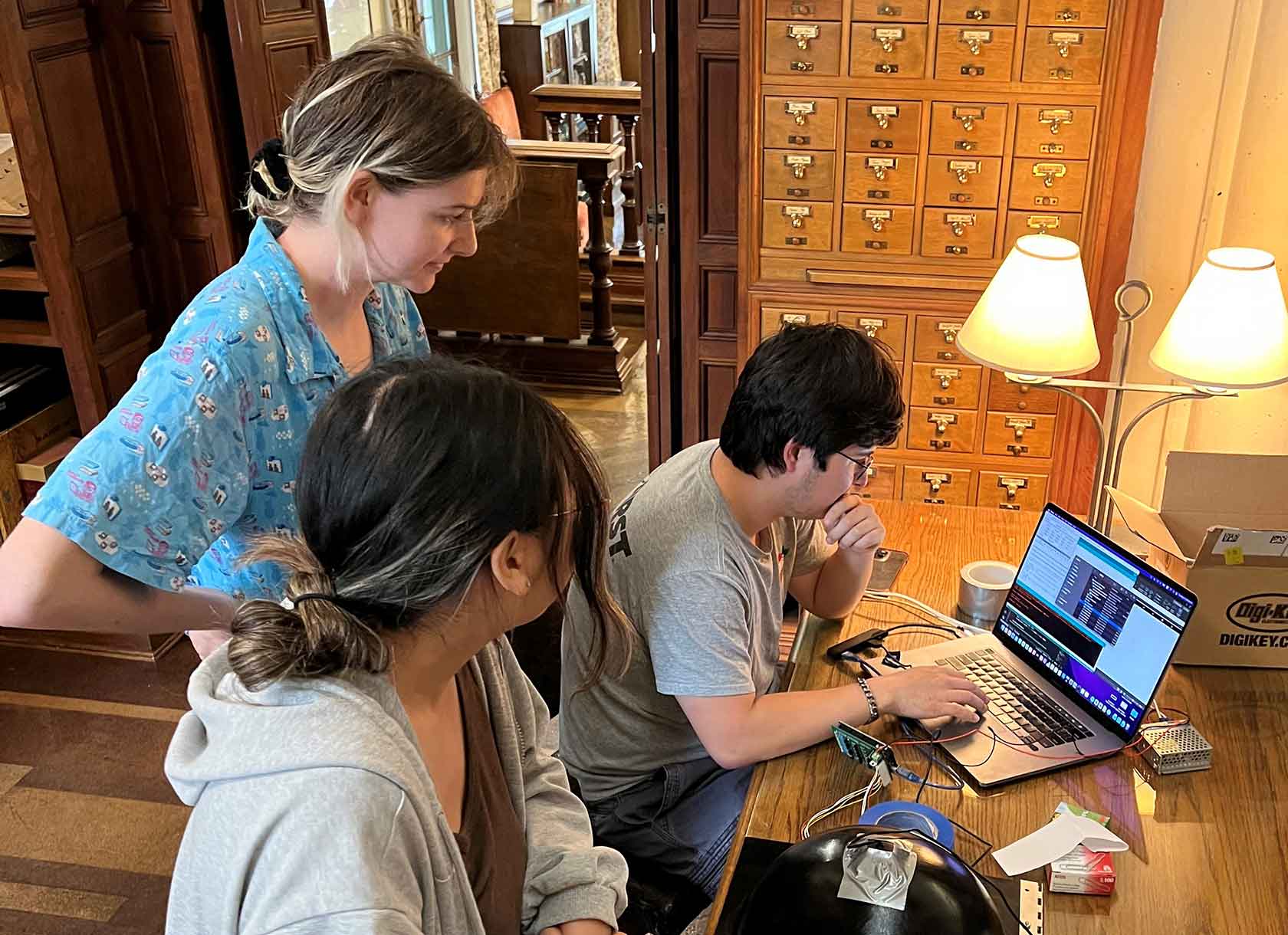By Lauren Mar ’25

The Venetian Wellhead, located in Sicilian Court, is an elegant accent to Scripps’ architecture. An ancient work used by Venetians to collect and dispense precious rainwater within public squares, the Wellhead is a grey limestone cylinder with intricate carvings on its surfaces. But for Visiting Professor in Art Conservation Eric Doehne’s Digital Preservation of Art class, the Wellhead is more than a decoration—it’s the basis for a class project and an emblem of the greater potential of digital conservation.
Doehne’s class was created thanks to a Mellon Interdisciplinary Humanities Initiative grant, which Scripps received to promote digital humanities as an academic discipline. Doehne describes digital humanities as “applying science and technology to humanistic questions and problems, such as cultural sustainability—whether and how we document, understand, and preserve culture. Digital preservation’s advances in technology and imaging science have made it possible to capture material culture in three dimensions as well as how a work of art actually interacts with light.”
As a hands-on project in digital preservation, the class scanned the Venetian Wellhead and analyzed its history. The class traced the font back to water scarcity in Venice, histories of tourism, and an important book on Italian gardens by novelist Edith Wharton, which helped repurpose these elegant technological artifacts as romantic souvenirs for American gardens in the Victorian era.
Doehne’s students then modeled the wellhead’s scans into the shape of a pencil cup and 3D printed it. This process of digitizing and disseminating historic material encapsulates the goals of the course: introduce students to digital preservation, explore how it works, and apply it to relevant objects as ways of archiving culture.
“The hands-on aspect of this class is really rewarding,” says art conservation and art double major Jessica Yim ’25. “The way we combine different technologies¾such as ultraviolet scanning, infrared scanning, and 3D printing¾with art allows us to work with the future of art conservation.”
This inexpensive technology allows museum and archive digital databases, such as those at the Ella Strong Denison Library, to feature more than individual photographs of their collection highlights. Doehne’s class worked with Denison’s special collections library of ancient tablets, which are approximately 5,000 years old and contain some of the earliest writing in archival history. Students utilized two different conservation techniques, photogrammetry and Reflectance Transformation Imaging (RTI), to digitize and create 3D models of the clay cuneiform tablets. The 3D digital scans will be added to the Claremont Colleges’ Digital Library to make them more accessible to scholars for translation and as an archival backup in case of loss or damage. The capture process helps students understand how an object’s surface and texture interact with light, which is a key component of the in-person experience of a work of art.
“It’s applied science, it’s applied history,” Doehne explains. “In this kind of an academic institution, there’s a place for interdisciplinary thinking, so these technologies and this course give students a lens through which to look at the big challenges and rapid changes occurring in cultural sustainability and art conservation.”
Doehne is also committed to making the concept of digital preservation relevant to contemporary society. The class has discussed efforts in Ukraine to digitally archive monuments and websites that have subsequently disappeared or been destroyed during the Russian invasion. According to Doehne, digital preservation is an excellent way to provide a three-dimensional record of what’s called intangible cultural heritage.
Yim echoes the importance of the need for this type of conservation. “Professor Doehne’s class has made me think a lot about decaying and loss of information,” she says. “Before this course, I had not considered the digital aspect of art conservation, and now I see it as the future.”

